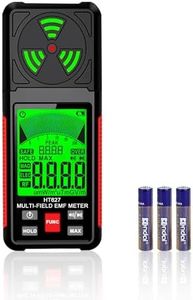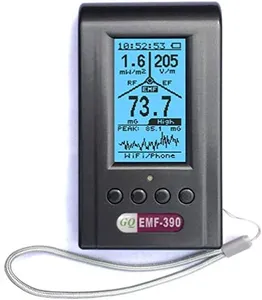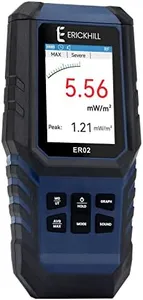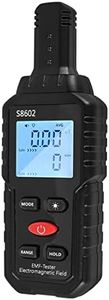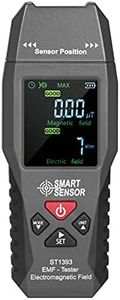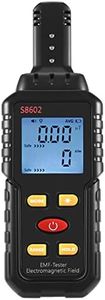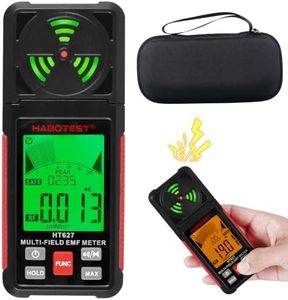We Use CookiesWe use cookies to enhance the security, performance,
functionality and for analytical and promotional activities. By continuing to browse this site you
are agreeing to our privacy policy
10 Best EMF Detectors
From leading brands and best sellers available on the web.Buying Guide for the Best EMF Detectors
Choosing the right EMF (Electromagnetic Field) detector can seem tricky, but with a little knowledge, you can find the best one for your needs. EMF detectors are used to measure electromagnetic fields, which are generated by electronic devices, power lines, and even natural sources. Your choice should be guided by what you plan to use it for—whether it's for detecting household EMF emissions, performing scientific investigations, or even ghost hunting. Focusing on key features and understanding what they mean will help you pick a device that's accurate and useful for your purposes.Frequency RangeThe frequency range tells you what types of electromagnetic fields the detector can pick up, usually measured in Hertz (Hz). This is important because different sources of EMF emit at different frequencies—home appliances produce low-frequency fields, while wireless devices operate at higher frequencies. Basic detectors only cover low frequencies, which is good for monitoring household wiring or power lines. Mid-range detectors can handle both low and mid-frequency sources, including some wireless devices. Advanced models scan low to very high frequencies, useful if you are interested in everything from power lines to cell towers and Wi-Fi. To pick the right one, consider what kind of EMF sources you're most concerned about and check if the frequency range covers them.
SensitivitySensitivity refers to how small or weak of a field the detector can measure, often given in microteslas or milligauss for magnetic fields. A higher sensitivity means the detector can notice even faint EMF signals. Less sensitive units are fine for finding strong emissions from larger devices or power lines. More sensitive detectors are helpful if you want to detect low-level fields, such as those emitted by distant cell towers, or for more precise readings indoors. Think about whether you need to track down strong sources or subtle, weaker ones—this should guide your sensitivity preference.
Types of EMF DetectedSome detectors only measure one type of EMF, like magnetic, electric, or radio frequency (RF), while others are 'tri-field' or multi-type and can measure all three. This matters because not all EMF sources emit the same type of field. If you’re just concerned about power lines, a magnetic field-only model may be enough. For a broader survey, such as checking a house or workplace for a wider array of EMF, a multi-type detector is more versatile. Your intended use should decide whether you need a specialized or an all-in-one detector.
Display and ReadoutThe way your detector presents measurements can affect how easy it is to use. Some detectors have simple lights or sound indicators to show EMF strength, while others offer digital screens with exact numbers. Basic indicators are easy for quick checks but don’t provide details for comparisons. Digital and graphical displays give precise values, which help if you want to log data or check for small changes in EMF. Decide if you prefer quick, simple feedback or want detailed, numerical information.
Ease of UseEase of use covers things like how many buttons there are, the complexity of settings, and whether you need to calibrate the device often. Simple detectors have straightforward controls and are good for beginners or casual checks. More advanced models may require setting up and adjusting, which suits experienced users who want more features. Think about your comfort level—if you're new to EMF detection, look for devices that are advertised as user-friendly.
PortabilityPortability means how easy it is to carry the detector around. Larger detectors may have more features but can be bulky, while compact or handheld models are easy to use on the go. If you need to check different rooms, visit multiple buildings, or carry the detector in your pocket, look for lightweight and portable designs. If the detector will mostly stay in one place, portability is less important.
